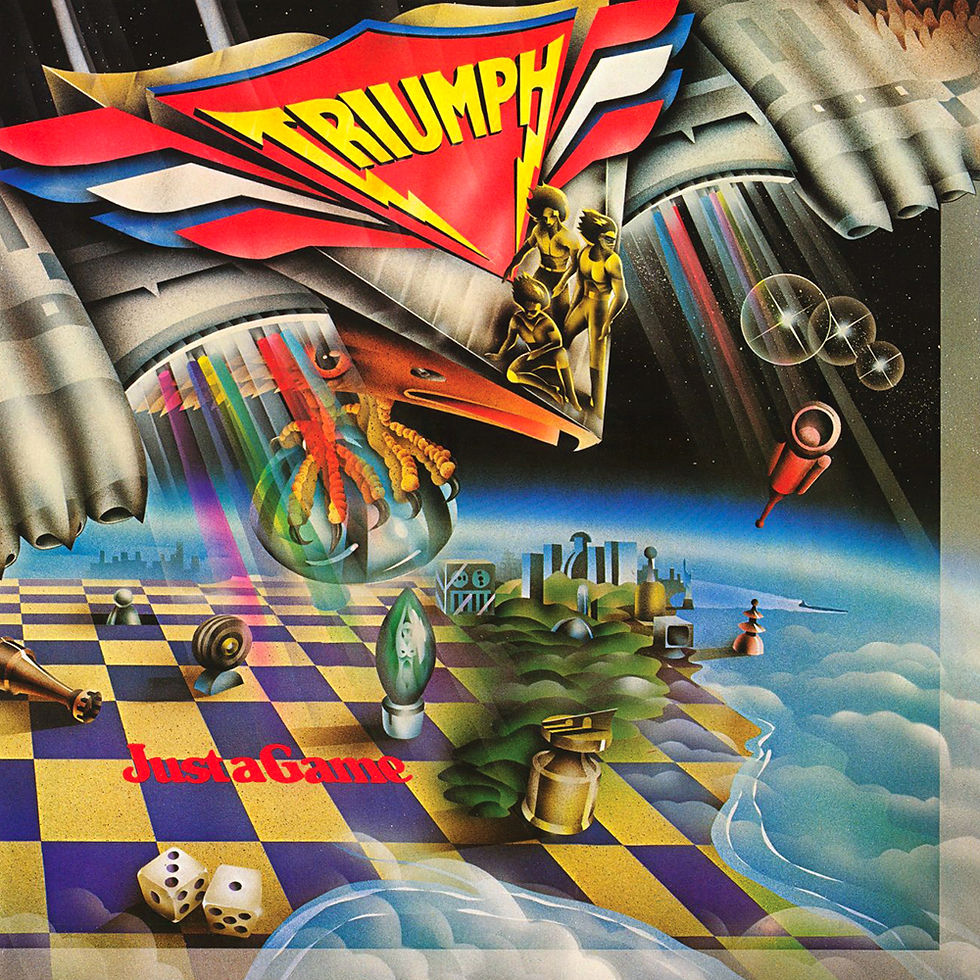Wishbone Ash - Argus
- FaceOff - עימות חזיתי

- Apr 28, 2025
- 4 min read
On April 28, 1972 "Wishbone Ash" released their third album "Argus".

This album is considered a milestone in the development of the "Twin Lead Guitar" sound, the combination and harmonization between two guitars, which was later adopted by bands such as "Thin Lizzy" and "Iron Maiden". It's not for nothing that Steve Harris was quoted as saying in an interview with "Guitar World" magazine in 2011, as follows: "I think if anyone wants to understand Maiden's early thing, in particular the harmony guitars, all they have to do is listen to "Wishbone Ash's" "Argus" album".
"Wishbone Ash" was established in October 1969 and its roots are rooted in the previous band of its founders "The Torinoes", which was active from the beginning of the 60s. You will be surprised, but it was not really customary at that time for rock bands to include two lead guitarists. So how did it happen here and have such an impact on the metal bands that came after? The founders of the band were bassist and singer Martin Turner and drummer Steve Upton. They were looking for a guitarist to replace Glenn Turner (Martin's brother) and held quite a few auditions, but just couldn't decide between their two finalists, Andy Powell and Ted Turner (no relation to Martin this time). So what did they do? They just took both, just to see what it will sound like. And it sounds just great!!! It is interesting to note, that exactly in the same year that "Wishbone Ash" was formed, "The Allman Brothers Band" was formed on the other side of the ocean, in Jacksonville, Florida, and also included two leading guitarists. But unlike the twin guitar sound of the "southern rock" pioneers, the sound of "Wishbone Ash" included strong elements of "progressive rock" and "folk" music and thus their uniqueness. The name of the band was chosen after its members wrote some suggested names on two sheets of paper. Martin Turner chose one word from each list and the result was: 'Wishbone' and 'Ash'.
The band's big opportunity came at the beginning of 1970, when "Wishbone Ash" managed to be the opening act for "Deep Purple". Guitarist Ritchie Blackmore jammed with guitarist Andy Powell at one of the Soundchecks and got really excited. He was also very impressed by the amazing abilities of the rest of the band and decided to recommend "Wishbone Ash" to producer Derek Lawrence, even helping them get a contract with "Decca/MCA Records".
The band's eponymous debut album, "Wishbone Ash", was released in December 1970 and its musical style included elements of blues, jazz, progressive rock, and psychedelia. A year later, the group released "Pilgrimage" which already focused more on acoustic folk music than the blues rock sound that dominated the first album. It also included quite a bit of instrumental jazz and that is where the band began to develop their vocal harmonies (in the style of Crosby, Stills, Nash, and Young), as well as the harmonies between the guitars.
But the band reached its creative and commercial peak with the release of their third album "Argus", which became their best-selling and most influential album. This is the album where the band's sound and style began to take shape. To record the album, producer Derek Lawrence collaborated with "Deep Purple" sound engineer (and future producer) Martin Birch, with the two utilizing the (then) state-of-the-art 16-channel console to create this masterful album in less than a month.
The very unique style of the album and the band is already revealed in the opening track "Time Was". It is a complex epic of almost ten minutes, which begins with a long acoustic folk section, which builds the tension nicely before the song takes a turn around the 3:00 minute mark and becomes rockish. From there the song develops and changes, with no less than three lead parts by the two leading guitarists Andy Powell and Ted Turner, who also make sure to pad the song with harmonies and short guitar phrases.
"Sometime World" sits already in the bluesy genre with a solid bass line that holds this bluesy ballad throughout. Like the opening song, here too the track takes a rockier turn with an energetic jam that includes great leads from the pair of guitarists.
"Blowin' Free" works exactly the opposite of the previous two sections. It features an interesting guitar intro that leads us into the tight rhythm of the song, but then, the song just breaks down into a gentle, quiet transition section before coming back and bursting with bluesy guitar solos, the latter of which leads the song to its end.
The other side of the vinyl opens up to the rhythm of marching drums that announce the arrival of the king. "The King Will Come" is one of the album's most beautiful songs, emphasizing the combination of English folk music with blues and rock. In contrast, "Leaf and Stream" is entirely based on English folk. It's a quiet and pure folk song with a particularly melodic lead vocal that also highlights Martin Turner's vocal abilities. The album ends with a two-part mini-suite by Andy Powell and Ted Turner. A pair of songs that connect to each other both lyrically and melodically. "Warrior" features long sections of music that drain into a long jam. This song also corresponds with the album cover designed by the legendary Storm Thorgerson. Immediately after it comes "Throw Down the Sword", which already refers to the moments after the battle, in which the "warrior" puts the sword aside and gains glory, in an epic ending led by the pair of guitars that take us to a long, sweeping solo until the end.
For Listening: Spotify













Comments